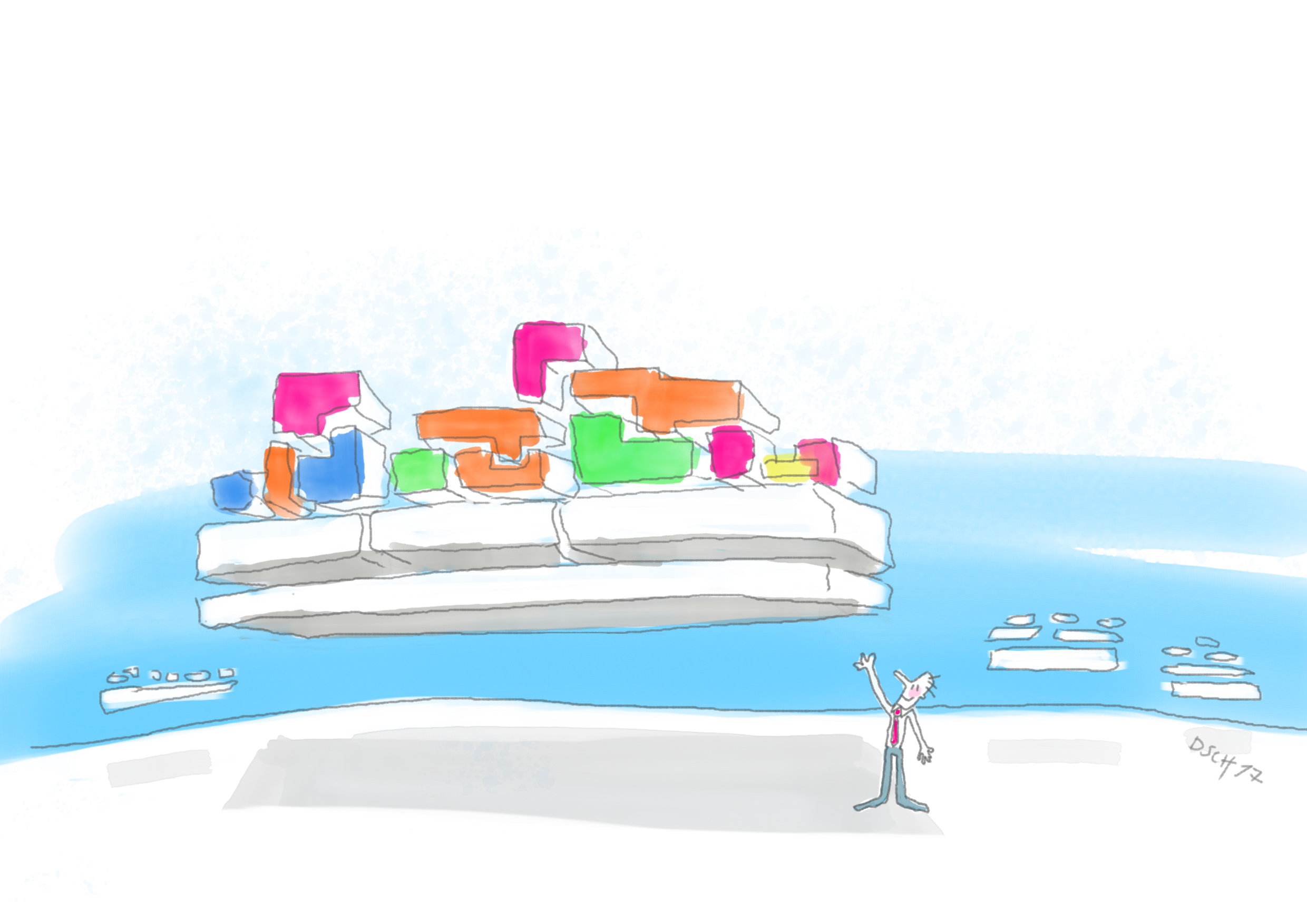In the digital economy, platforms bundle access to products and services. In the B2C environment they have long redefined the rules of the game in entire industries. In B2B commerce this change has yet to take place. Which platform approaches exist as yet for industry-specific commerce? And what can companies do to avoid losing end customer contact to an Amazon of their industry?
What with ordering by fax, scribbling in the printed catalog, and visits by sales reps, digitization has not made much of a mark on purchasing and sales processes in small and midrange businesses. In 2017, media discontinuities and inefficient manual processes still predominate in B2B business. To assume that you can ignore digital change and its side effects and maintain grown structures is, however, a misconception. The rules of the game are changing even though established market players may try with all their might to defend their historically accrued industry privileges.
In 2017, media discontinuities and inefficient manual processes still predominate in B2B business.
Platform approaches are already apparent in many economic sectors. They are especially evident in the so-called GAFA economy (Google, Apple, Facebook, and Amazon). The focus of these companies’ business models is on seemingly monopolistic platforms – the search machine, the app store, the social media platform, the online marketplace – that bundle access to certain resources. In Germany only six out of ten companies are focused on the platform economy and its effects on business. This may be due in part to the fact that business executives simply lack digital competence[1].
In B2C business, platforms are already a reality and the most normal thing in the world. Amazon began by selling books and now sells goods of every conceivable kind in its online marketplace. Zalando developed from a shoe retailer into a Europe-wide fashion platform. Otto grew from a mail order firm with its own warehouse into a full-range marketplace. REWE, Karstadt, About you, and DHL Allyouneed have also taken up marketplace ideas. In the B2B sector, in contrast, only a few market players have started to realize that sales structures are undergoing a drastic platform-based change and that an abrupt end awaits a cherished three-stage sales culture that discriminates against end customers.
Platforms: A Blessing for Customers, a Dilemma for Retailers
Yet it is highly plausible that similar structures will prevail in B2B commerce. The crucial reason is that customers come by the goods they need for their business faster and more easily. Take food wholesalers, for example. At present, caterers and restaurants interact with different traders via different channels. Caterers will place weekly orders with different traders – by fax, from the catalog, from the Web shop, by telephone, or with the sales rep. These are all different processes, modes of access and ways of ordering. The customer then has to consolidate orders, deliveries and inventories manually. That can lead to errors and takes time that the purchaser (usually the chef or restaurateur) then no longer has in which to concentrate on his basic task.
No more time-consuming fax orders or field sales force calls.
If there were a platform – a kind of food wholesale Amazon – ordering would be much simpler and easier for caterers and restaurateurs. They would have bundled, cross-dealer access to goods and could order them centrally, such as by app, by scanner, or by an automatic calculation of scheduled food requirements for the next few days. No more time-consuming fax orders or field sales force calls. And with the right self-learning forecasting tools you could even ensure that you always have enough, but never too much, (especially perishables) in stock.
For customers the platform would be a blessing; for businesses it would pose a dilemma. The platform controls customer contacts. It sets the rules according to which goods are offered for sale and the fees that are charged. Use a platform passively as a trader and you may benefit, for one, from a wider range and a larger clientele. On the other hand you run the risk of falling margins, rising interchangeability and losing direct contact with your customers. Yet who could develop the operating system in your line of business if you would sooner not wait for a new player from the digital world? Trade associations? Wholesalers? Definitely not. They have no digital and process know-how, no end customer focus, and no self-interest. But what is the alternative for manufacturers and retailers? What are their options? Is it worth setting up a platform of your own?
Map an Individual Offering Digitally
A first step in the direction of platform business is to consistently digitize data, processes and functions that relate to suppliers, partners and customers. That is an indispensable precondition for all digital sales approaches, and platforms in particular depend on the provision of a standardized digital infrastructure for processes, information, transactions, communication and administration that brings together as many industry participants as possible. Isolated lighthouse projects along the lines of “we too are now building a Web shop” and similar alibi events are doomed to failure if the homework has not been done and substantial investments and decision-maker commitments have not been made. What doesn’t hurt is unlikely to work. Call the business model and processes into question. Leave no stone unturned. Don’t protect any “don’t touch” areas.
Isolated lighthouse projects along the lines of “we too are now building a Web shop” and similar alibi events are doomed to failure
Customer-focused direct selling is a very promising alternative or addition to passive participation in an online platform – especially for manufacturers and service providers with individual products and services. An example of what an individual shop solution can look like is the B2B Web store of printing machine manufacturer manroland. Customers can order accessories and spare parts for their machines from the shop. The highlight is that the shop has digital illustrations of customers’ individual machines. With the aid of exploded-view drawings customers can navigate around their machines and order spare and wear parts. The abundance of detail and the service that it provides make this offering unique and rule out interchangeability.
Set Up a Vertical Platform of Your Own
A further step can be to add classical marketplace approaches to your own trading platform and establish a platform for a specific niche. The idea is to open up your infrastructure for competitors and external suppliers and, as the case may be, for external developers and IT partners. That is the strategy adopted by, for example, Klöckner & Co. SE, one of the world’s largest producer-independent steel and metal distributors. To achieve its vision of becoming an industry platform for the steel and metal industry the company – roughly summarized – has taken the following steps:
- Set up a service platform
- Gradually open the platform such as by integrating marketplace functions
- Develop it into an open industry platform
Vertical platforms for certain niches can be quite interesting for dealer groups, purchasing and industry associations, wholesalers and manufacturers. Setting up a platform that enjoys industry acceptance requires substantial investment, however. Klöckner, for example, founded two startups. kloeckner.i GmbH bundles all digitization-related projects and kloeckner.v GmbH focuses on disruptive B2B business models.
In addition to in-house development of competences related to technology and dealing with data a business mentality rethink is required. Manufacturers and dealers must cast off their blinkers and be prepared to cooperate with competitors, aiming strictly for transparency rather than secretiveness. That will not be easy for people with a trade association or guild background, but today’s data-driven business world is unaware of this kind of market barrier and lack of transparency that no longer exists.
Keep an Eye on Horizontal Platforms

Manufacturers and traders should check whether and which business models they can develop by means of IoT platforms. As a pioneer or in cooperation with complementary partners new revenue potentials can be sounded out in this way.
Conclusion:
Ultimately the customer decides where he shops and with whom he maintains business relations. He will do so where he has the most convenient access to the goods and services that are of relevance for him and where his business is best supported. Small and midrange business would be well advised to question themselves and their company. Engage in new technology and methods. Be open to innovative and at times radical mind games and business models. Trust young people with digital competence (so-called digital natives) and enable them to transform your company digitally without restrictions and with maximum support. Not least, always question your decisions from the customer’s perspective. He, not you, must rise to the bait. He is always your first consideration. Place the digital operating system at your industry’s disposal. Otherwise someone else will do so – and dictate the rules of the game.
[1] http://www.spiegel.de/wirtschaft/unternehmen/deutschen-konzernbossen-fehlt-digitalkompetenz-a-1170259.html







